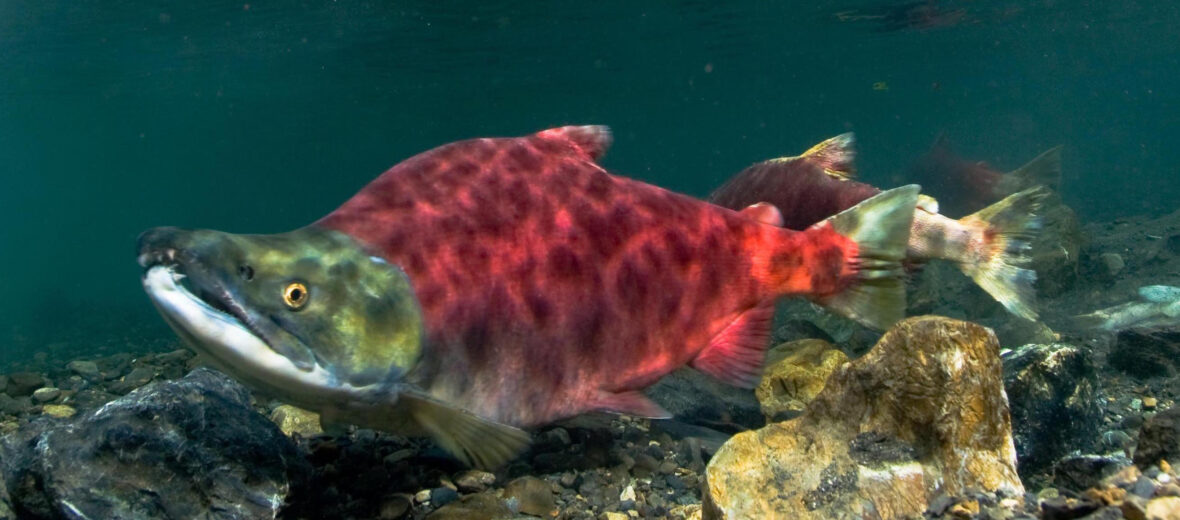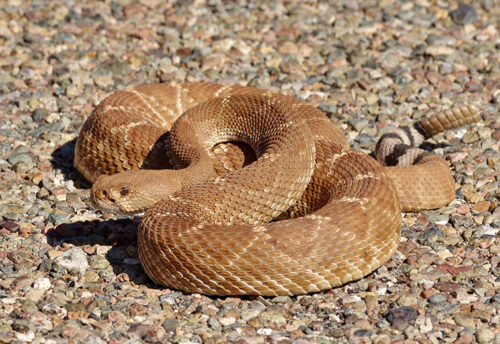
Found from the Klamath River in Northern California to the Kuskokwim basin of western Alaska, it’s the sockeye salmon. These sizeable fish are a favorite of fly fishermen. The sockeye population, which has the longest salmon migration, has been known to travel up the Columbia River to Redfish Lake, Idaho, which is more than 900 miles from the ocean and approximately 6,500 feet above sea level! These fish are listed as Least Concern by the IUCN.
First the Stats…
Scientific name: Oncorhynchus nerka
Weight: Up to 15 lbs.
Length: Up to 33 inches
Lifespan: Up to 5+ years
Now on to the Facts!
1.) Sockeye salmon are anadromous (hatch in freshwater rivers, streams, and/or lakes and typically rear in freshwater lakes for 1 – 3 years, until they reach the smolt stage and then they migrate to the ocean to feed and grow). After about 4 years +/-, they return to fresh water to mate and die.
2.) Males are called Jacks. Females are called hens.
3.) During the spawning run, sockeyes, primarily males, undergo a substantial physiological change. This change includes an increase in body depth and the development of a pronounced kype (a hook-like secondary sex characteristic which develops at the distal tip of the lower jaw). The body turns bright red, and the head turns green.
4.) Their main predators, in their adult phase are bears which are able to snag them in mid air, as they make their way up stream to their breeding grounds.
5.) The name “sockeye” comes from the Halkomelem word “suk-kegh”, which translates to “red fish”. Sockeyes are also known as blueback salmon because of their silvery blue coloration during their oceanic phase of life.
But wait, there’s more on the sockeye salmon!
6.) A great deal of salmon are threatened by the proposed development of the Pebble Project. This is a huge open-pit copper, gold, and molybdenum mine; which would sit at the headwaters of Alaska’s Bristol Bay. It stands to dramatically affect the livelihoods of the local fishermen by drastically reducing the populations of salmon and other fish. We can only hope that this mine never comes to be.
7.) They typically spawn in the summer or in the fall.
Did you know…?
Sockeye salmon are known for not taking flies easily. This is because they primarily feed on zooplankton and small prey, they have no impulse to seek baitfish. However, a well placed fly at the right depth will typically get a strike, and once the fish is on, the fight is grand!
8.) Females select a preferred spawning site, dig a nest (redd) with their tails, and then deposit her eggs (around 2,000 – 4,500) in the redd. Males then swim over the redd and fertilize the eggs.
9.) After the male fertilizes the eggs, the female will use her tail to waft gravel over the eggs to protect them from predators.
10.) The eggs hatch during the winter and the alevins (larvae) feed off their yolk till early spring. Then they emerge as fry and spend the next 1 – 3 years in fresh water. They then make the arduous task out to sea to continue to grow.
Now a Short Sockeye Salmon Video!
Also, check out the Critter Science YouTube channel. Videos added frequently!
Want to suggest a critter for me to write about? Let me know here.



